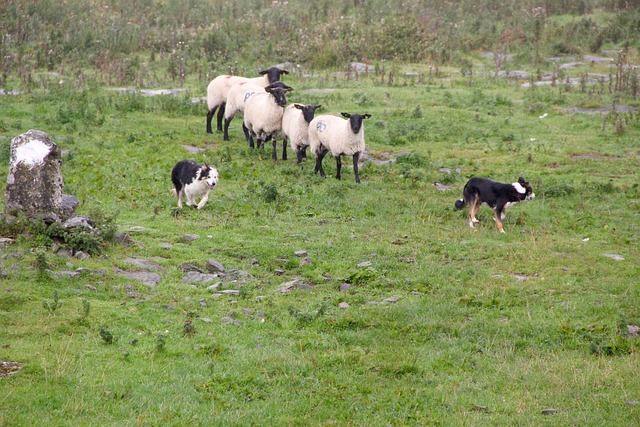In a bizarre turn of events that has captured both national attention and global intrigue, Sri Lanka finds itself in an unexpected frenzy following the antics of a mischievous monkey. The incident, which has been dubbed “Monkey Unplugs Nation,” saw the cheeky primate wreak havoc on the local electrical grid, leading to widespread power outages and sparking a wave of outrage and amusement across the country. As citizens grapple with the implications of the power disruption, the event raises questions about wildlife interaction in urban environments, the resilience of infrastructure in the face of unpredictable challenges, and the peculiar relationship between humans and the animal kingdom in Sri Lanka. This article delves into the details of the incident, the response from authorities, and the broader social and cultural ramifications of this unusual disruption, painting a vivid picture of a nation grappling with the chaos of the unexpected.
Sri Lanka Faces Power Outage Crisis After Primate Interference
The recent power outage in Sri Lanka has been attributed to an unusual incident involving a monkey that reportedly unplugged a crucial power supply.This incident has sparked widespread laughter and frustration across the island nation, as citizens grapple with the repercussions of lost electricity during peak hours. The primate, often seen as a harmless fixture in local folklore, became the unintended catalyst for a series of energy woes that have challenged the grid’s resilience during an already strained period marked by political and economic turmoil.
Authorities have been rapid to respond, launching investigations into the power supply systems while implementing temporary measures to maintain stability. Meanwhile, this bizarre event has led to varied public reactions, including humorous memes and social media outbursts reflecting the absurdity of the situation. Key points of concern include:
Increased Demand: With rising temperatures, energy consumption has soared.
Infrastructure Vulnerability: The incident highlights the fragility of the national power grid.
Wildlife Management: Calls for better control of the local monkey population near utility facilities.
Incident Type
Impact
Power Supply Interruption
Widespread outages across urban areas
Public Response
Humor and frustration shared on social media
Government Action
Investigation into power supply systems

The Role of Wildlife in Urban Infrastructure Challenges
Urban environments often clash with wildlife habitats, resulting in challenges that extend far beyond the occasional sighting of a raccoon or deer. In Sri Lanka, a recent incident involving a monkey unplugging a vital power supply highlights the complex interplay between city infrastructure and wildlife. As cities expand into natural habitats, species like monkeys are forced to adapt to human environments, sometimes leading to unforeseen complications such as power outages or disruptions in telecommunications. This phenomenon prompts a critical examination of how urban planning can account for and integrate wildlife behaviors into infrastructure systems.
to minimize conflicts and enhance coexistence, cities could adopt several strategies:
Wildlife corridors: Establish designated pathways for animals to safely traverse urban areas.
Smart Infrastructure: Implement technology that anticipates wildlife interactions, such as motion sensors on power lines.
Community Awareness: Encourage local communities to understand and respect wildlife, fostering a sense of duty.
Regulatory Frameworks: Create policies that protect wildlife while accommodating urban growth.
Strategy
Description
Wildlife Corridors
Paths for safe animal travel across cities
Smart Infrastructure
Technologies to predict animal movements
Community Awareness
Education on wildlife and urban dynamics
Regulatory frameworks
Policies balancing wildlife protection and growth

Analysis of the Economic Impact of Unforeseen Power Interruptions
The recent peculiar incident in Sri Lanka, where a monkey inadvertently caused a power outage, underscores the fragility of the nation’s energy infrastructure and its broader economic ramifications. Such unforeseen power interruptions can have a cascading effect on various sectors, disrupting everyday life and commerce. businesses,especially those relying on electricity for production,can face substantial losses due to unexpected downtime. The inability to operate efficiently may lead to reduced output and a dip in productivity, affecting not just individual companies but also the larger economy. A few key areas impacted include:
Manufacturing Delays: Production lines halt, which can lead to delayed deliveries and contractual penalties.
Increased Operational costs: Businesses may incur additional expenses to recover lost productivity.
Customer Dissatisfaction: Interruptions can drive customers to seek alternatives, potentially leading to a loss of market share.
moreover, the economic fallout extends to the consumer level, where households experience disruptions in daily routines, potentially increasing the demand for option power sources, such as generators. This shift not only inflates household expenses but also reflects a growing insecurity in energy supply, prompting concerns about sustainability and governmental response. To better illustrate the economic impact, consider the following table highlighting increased costs and potential losses due to power interruptions:
Sector
Estimated Losses ($)
Impact Factor
Manufacturing
500,000
High
Retail
200,000
Medium
Residential (Generators)
75,000
Medium
Ultimately, this incident serves as a wake-up call for policymakers to prioritize infrastructure resilience and invest in comprehensive contingency plans that can mitigate the adverse effects of such unexpected power disruptions. The need to upgrade and maintain the energy grid, alongside implementing better crisis management protocols, has become paramount to safeguard both the economy and the livelihoods of the citizens.

Strategic Recommendations for Enhancing Wildlife Management
To address the challenges posed by wildlife management in Sri lanka, particularly the issue of monkeys impacting infrastructure, it is essential to adopt a comprehensive and collaborative approach. This includes enhancing community awareness through educational programs that inform local populations about coexistence strategies. Moreover, involving local and international experts can foster innovative solutions, such as:
Developing habitat corridors that promote safe animal movement
Implementing non-lethal deterrents to minimize human-wildlife conflict
Establishing a wildlife response team that can quickly address incidents when they arise
Additionally, leveraging technology could play a pivotal role in monitoring wildlife behavior and their interactions with human environments. Using drones for surveillance and camera traps can provide invaluable data that informs conservation efforts. A structured data management system to keep track of wildlife populations and their movements can be laid out as follows:
Technology
Purpose
Benefits
drones
Surveillance of habitats
Real-time monitoring
Camera Traps
Wildlife movement tracking
Data collection for behavioral studies
Mobile Apps
Community reporting
Increased public participation

Public Response to the incident: Social Media Reactions and Cultural Insights
The recent incident of a monkey disrupting power across Sri Lanka has ignited a wave of reactions on social media, capturing the collective inventiveness of netizens. Across platforms like Twitter and Facebook, users shared their incredulity and laughter, often using the hashtag #MonkeyBusiness to highlight the absurdity of the situation. Memes featuring the mischievous primate have gone viral, showcasing everything from humorous takes on the monkey’s escapades to more serious discussions about wildlife interactions in urban areas. Notably, many Sri Lankans expressed a sense of national pride in their unique wildlife, emphasizing the deep-rooted connection between the country’s culture and its fauna.
Moreover, the incident sparked lively conversations about the balance between nature and modern infrastructure. Commentators weighed in on the need for better wildlife management strategies, pointing out that such encounters are not merely amusing but underline a complex relationship. A survey of posts revealed key themes in public opinion:
Humor and Satire: Many poked fun at the sudden power outage and the monkey’s role.
Cultural Reflections: People linked the incident to local folklore and beliefs about monkeys.
Environmental awareness: Calls for conservation and better urban planning emerged prominently.
Sentiment
Percentage
Humorous
45%
Concern for Wildlife
30%
Indifference
25%

Lessons Learned: Incorporating Animal Behavior into Future Urban Planning
The recent incident in Sri Lanka highlights the profound impact that wildlife can have on human infrastructure. To mitigate such occurrences in the future, urban planners must prioritize an understanding of animal behavior. This involves assessing the ecological and social dynamics of urban wildlife populations and incorporating this knowledge into city designs. For instance, integrating natural habitats into urban environments can reduce wildlife-human conflicts by providing essential resources for animals without compromising human safety or convenience. Key considerations may include:
Wildlife corridors: Creating safe passageways for animals can help them navigate urban landscapes without disrupting human activities.
Buffer zones: Implementing areas where human access is limited can reduce stress on animal populations and prevent unintentional interactions.
Community education: Engaging local residents in understanding animal behavior fosters coexistence and encourages responsible interactions with wildlife.
Furthermore,incorporating real-time data collection on animal movements can significantly enhance urban planning strategies. Such initiatives could utilize technology like GPS tracking and drones to map animal behavior patterns,allowing cities to anticipate potential conflicts. A collaboration between ecologists, urban planners, and local communities can yield a sustainable approach to progress, ensuring that infrastructure projects respect the natural behaviors of urban wildlife. Here are some potential benefits:
Benefit
Description
Reduced Conflict
A better understanding of animal behavior can lead to fewer incidents, like the recent monkey unplugging, by designating safe areas.
Enhanced Biodiversity
By creating urban gardens and green spaces,cities can encourage native species to thrive,enriching the urban ecosystem.
Improved Public Safety
Strategically planned spaces can minimize human-wildlife encounters, reducing the risk of injury to both parties.

The Conclusion
the unexpected incident in Sri lanka, where a monkey managed to unplug the nation’s vital power supply, has sparked both concern and amusement across the globe. This unusual event not only highlights the challenges faced in maintaining infrastructure in a wildlife-rich habitat but also serves as a reminder of the unpredictable interactions between humans and nature. as the nation grapples with the aftermath and implements measures to prevent a recurrence, the image of a monkey causing such widespread disruption will undoubtedly linger in the public consciousness. A blend of humor and caution emerges from this episode, underscoring the need for robust systems that can withstand the unexpected whims of wildlife. As Sri Lanka moves forward, it will likely continue to reflect on this bizarre occurrence while seeking innovative solutions that preserve both its natural heritage and technological advancements.
Author : Asia-News
Publish date : 2025-02-18 17:40:16
Copyright for syndicated content belongs to the linked Source.